The Yume II are a feast for the senses, providing balanced tuning, stellar technical performance, and gorgeous aesthetics.
The original SeeAudio Yume were released a couple of years back to mixed reception. Following the tried-and-tested Harman curve, the Yume espoused outstanding tonality but were half-baked, and ended up as a flash-in-the-pan due to sub-par technicalities and a sub-bass roll-off.
Back to the chopping board, then. To address the issues of their predecessor, the SeeAudio X Crinacle Yume Midnight – a collaboration with famed reviewer Crinacle – were cooked up. This Midnight version had generally positive reviews and were regarded as a more polished and refined sequel, though they garnered only a cult following.
- Ergonomic and comfortable
- Beautiful mirror-like finish
- Easy to drive
- Good isolation
- Balanced U-shaped tonality
- Very coherent
- Fatigue-free with smooth but extended treble
- Excellent technicalities
- Shells may be prone to fingerprints or scratches
- Dearth of included ear tips
- Thin note weight
- Acceptable timbral accuracy for a BA containing hybrid, though perhaps not as natural as other competitors
Today, we will examine the Yume II, the third in this storied Yume series. Will they end up as another flavor of the week or turn out to be a gastronomical delight?
Company Overview
SeeAudio is a relative newcomer to the ChiFI scene. The Yume and Midnight described above are the company’s more famous IEMs.
SeeAudio has some other well-regarded multi-driver sets in the Bravery, Kaguya, and Neo. As of the time of writing, there is a Shimin Li Encounter Edition – a collaboration with Tangzu Audio – planned in the works.
Technical Specifications
- Form: IEMs
- Drivers: 1 x liquid silicon dynamic driver, 1 x Knowles RAD series balanced armature driver, 1 x Sonion 2300 balanced armature driver
- Impedance (Ohm): 17Ω
- Sensitivity (dB): 102dB ±1dB SPL/mW
- Frequency Response (Hz): 20Hz – 20kHz
- Removable Cable: Y
- Cable: 6N OCC (Ohno continuous cast) silver-plated cable
- Source Plug: 3.5mm TRS, single-ended
- Cup/Shell Plug: 0.78mm, 2-Pin
Packaging
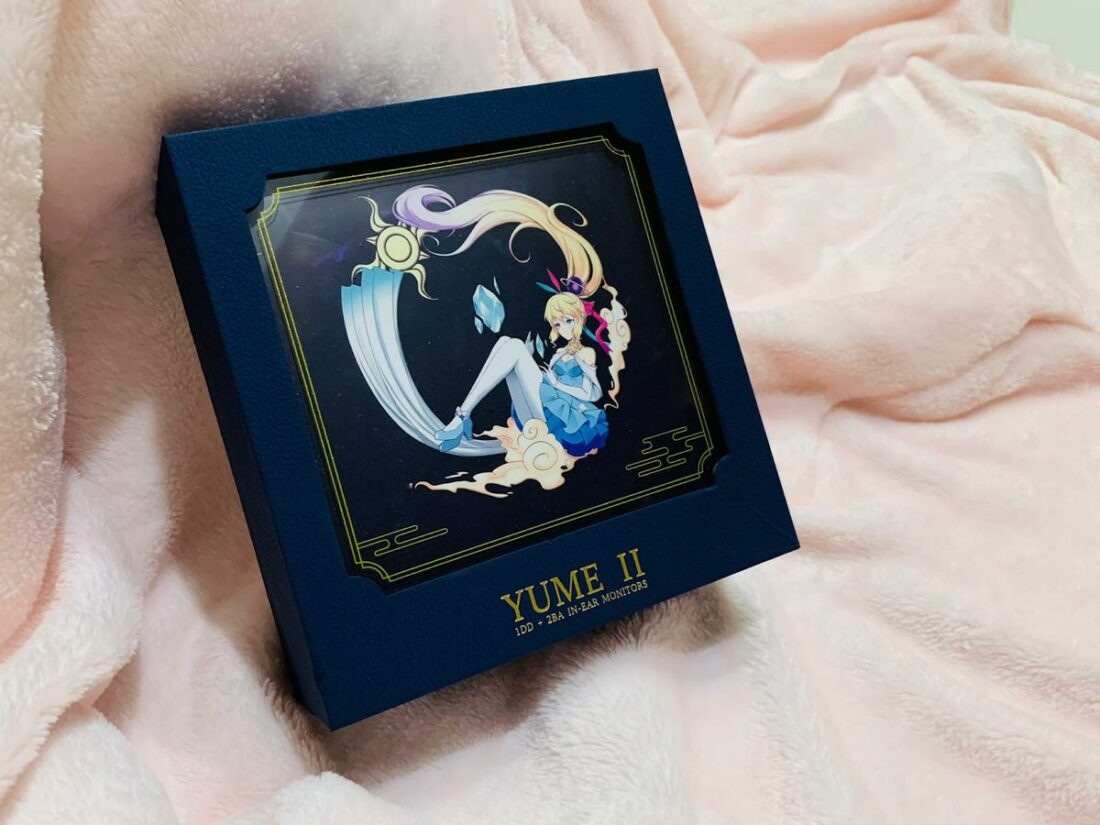
In the box
- SeeAudio Yume II IEMs
- 5 pairs of silicone ear tips (S, M, L)
- Cable
- Carrying case
- Anime waifu cards and badge
- Spare nozzle filters
- Cleaning cloth
The accessories are decent for something at the sub-USD$200 bracket, other than the glaring omission of different ear tip types.
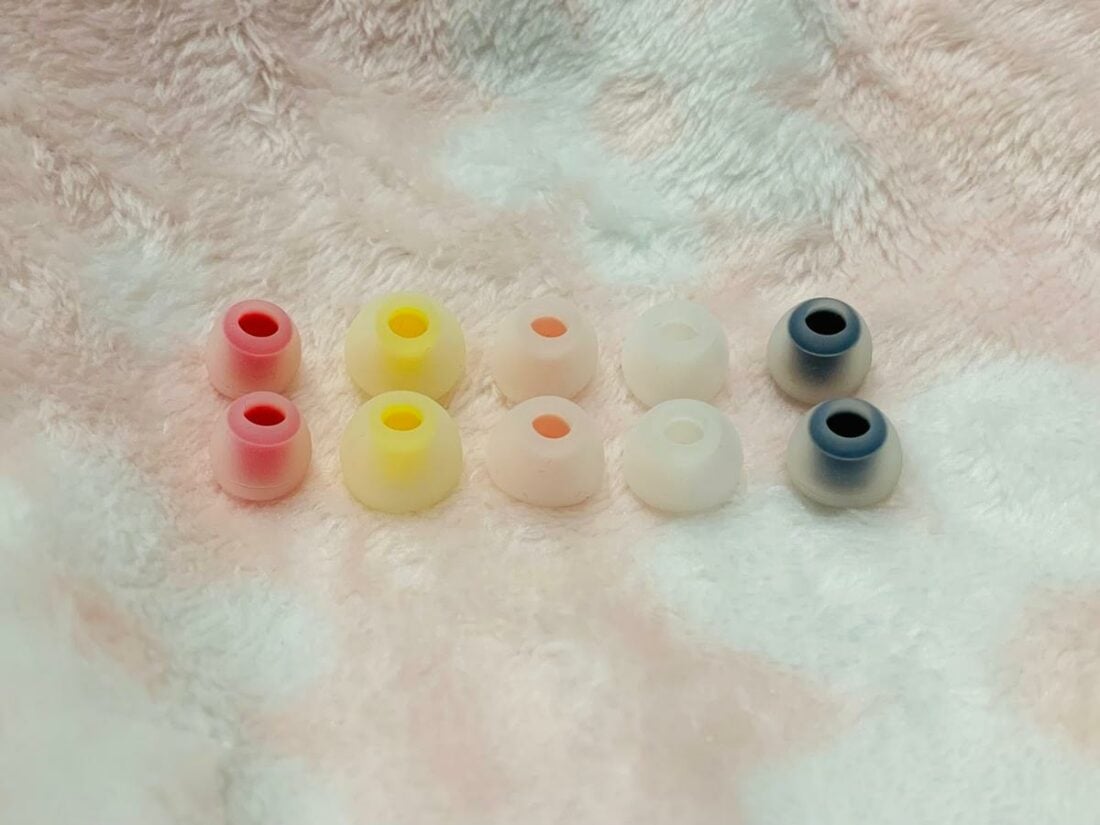
Consumers will be disappointed to discover that there is only one type of silicone ear tip and no foam tips. Nevertheless, the stock tips are balanced in terms of their sonic profile, comfort, and isolation.
At this price point, I expect more.
Not to fear; the waifu accessories more than cover this oversight, and any otaku worth their salt will appreciate the various anime baubles provided, such as a badge and waifu cards.

On a more practical front, the spare nozzle filters are useful in case the stock nozzles get clogged up with debris. The provided cleaning cloth is also a nifty addition, as the Yume II’s mirror-like shells are easily smudged!
Cable
The incorporated 6N OCC silver-plated cable is well-braided and supple. Unfortunately, it is on the thinner side and somewhat tangly. Thankfully, there are zero microphonics present, and there’s a chin cinch for added stability during usage.
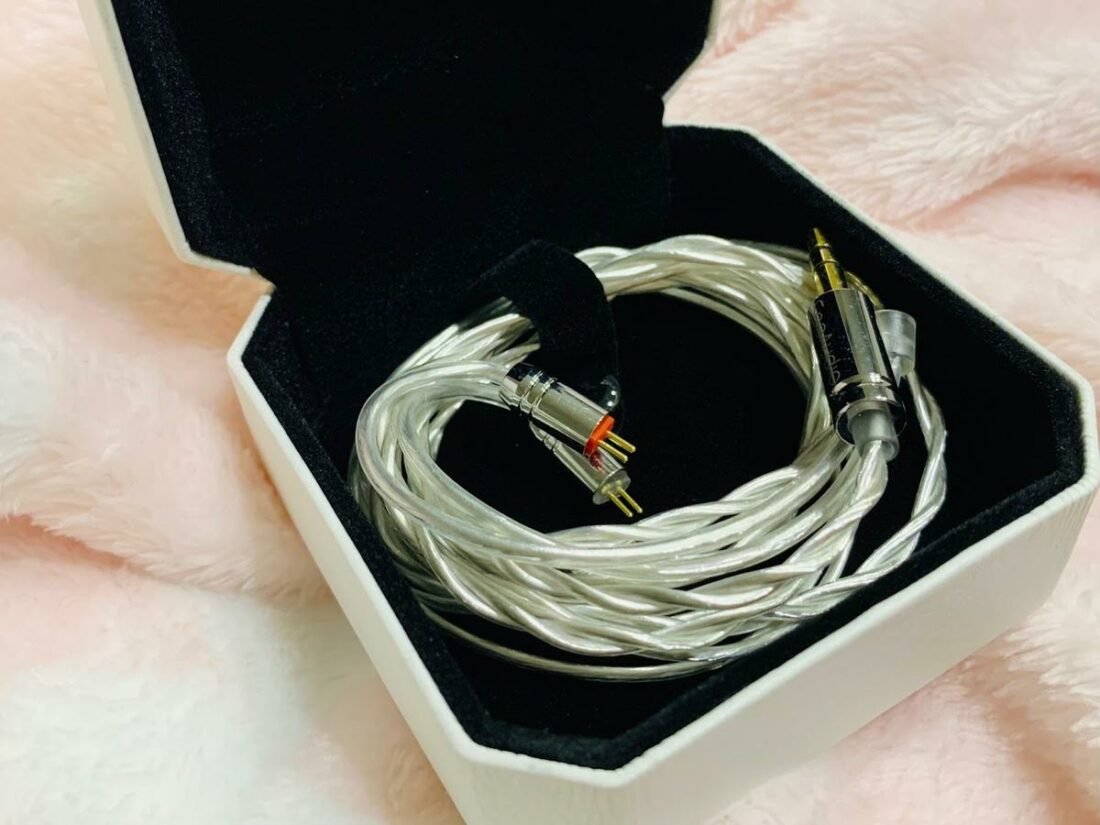
2-pin connectors are always welcome in my book, as they tend to be more robust than MMCX when it comes to frequent cable swapping.
Case
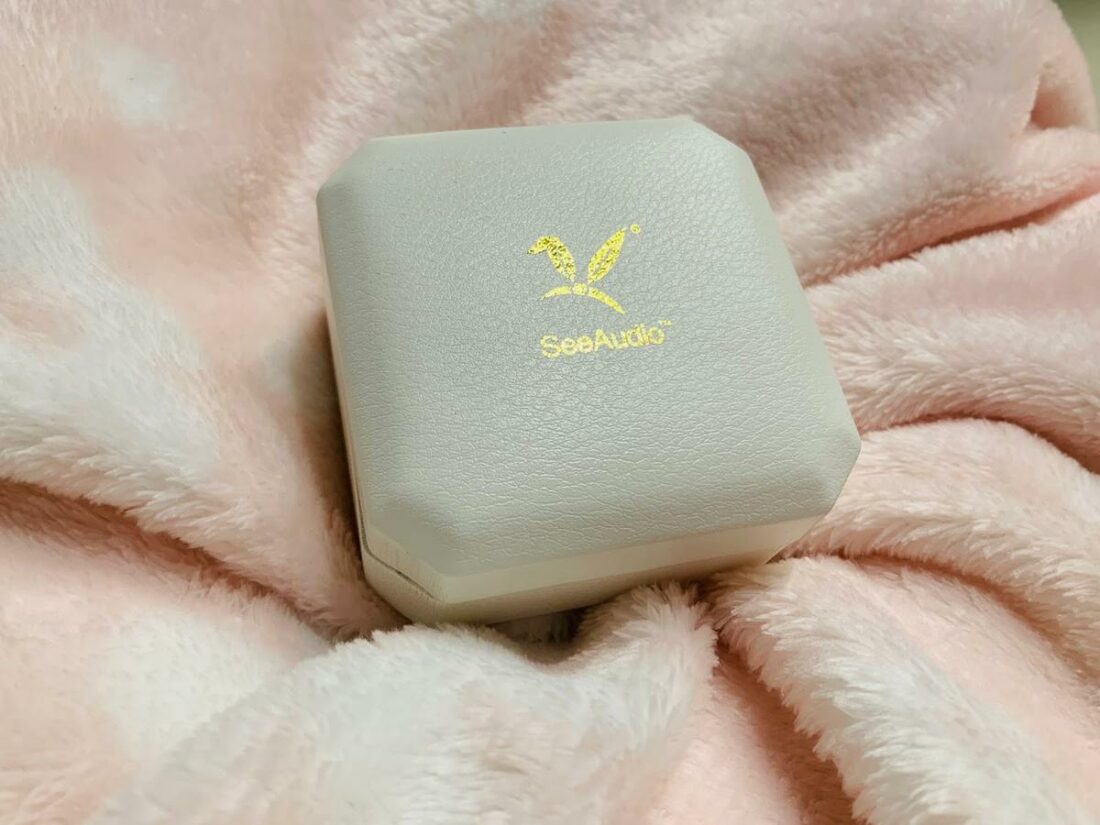
An elegant white clamshell-type leatherette case completes the accessory line-up. The inner aspect is lined with velvet, and there is even a button clasp!
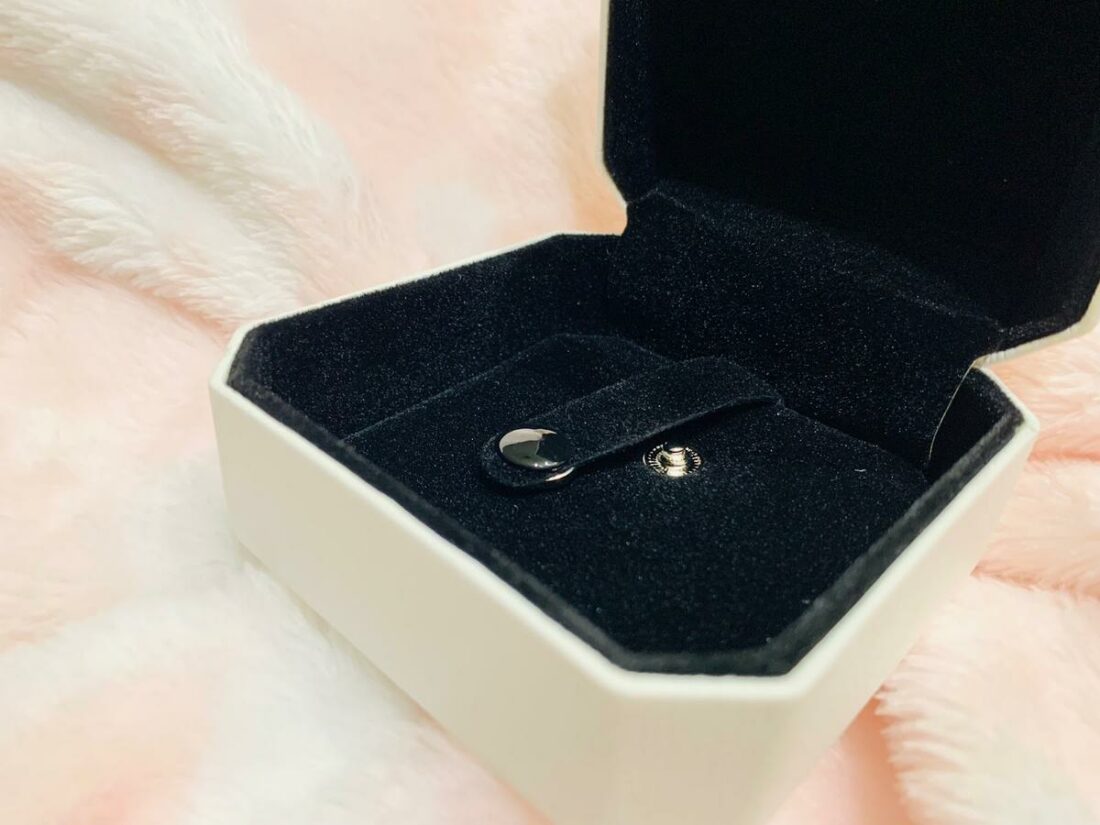
Design
The shells are fashioned via 5-axis CNC (computer numerical control) 3D-printed technology, utilizing aviation-grade aluminum alloy. SeeAudio advertises that each shell is manufactured under strict quality control, with a < 0.2mm wall thickness and <0.05mm inner wall deviation.
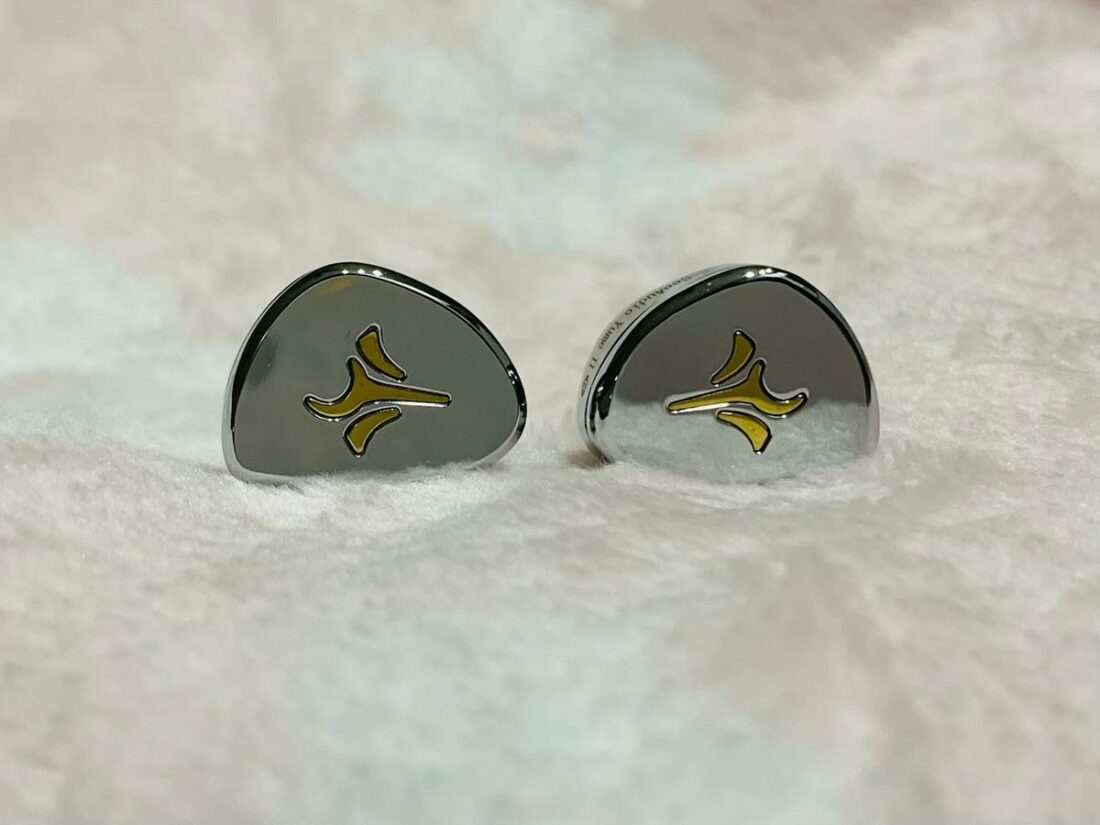
The housings are real beauties, featuring a teardrop-shaped mirror-like finish with a gold inlay. Honestly, the Yume II have one of the prettiest designs I’ve encountered in my IEM journey, and they are a far cry from run-of-the-mill black or metallic designs.
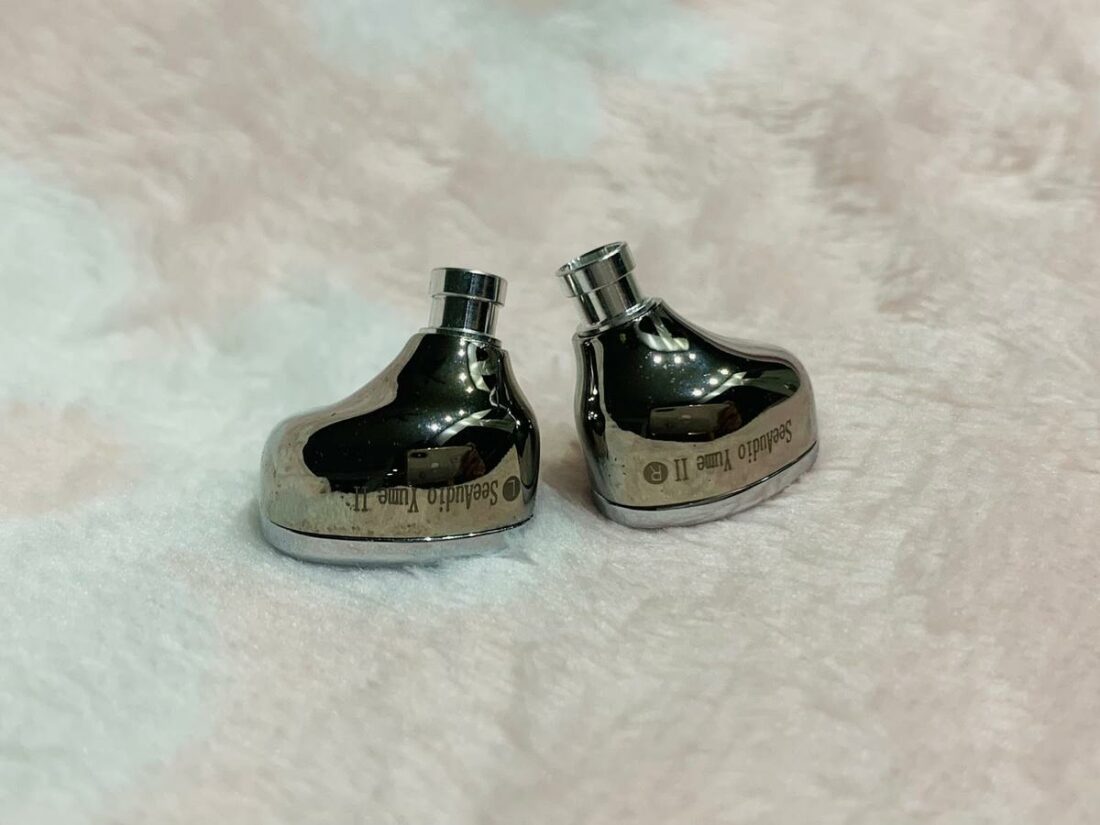
Comfort
Comfort and ergonomics are top-notch. The shells are light with no awkward protrusions, and I have no issues using the Yume II for long listening sessions.
There is a specially placed vent hole in each housing, which SeeAudio says optimizes air pressure between the atmosphere and the ear – indeed, I do not encounter any driver flex, so this may not be hyperbole.
Despite the inclusion of the aforementioned vents, isolation is good. Indeed, SeeAudio claims passive isolation of 26dB for the Yume II. They are definitely usable in noisy places such as trains or buses.
Internals
The Yume II employ a three-driver set-up.
A liquid silicone DD takes care of the bass frequencies. Said DD is marketed to provide an amplitude of more than two times that of standard DDs, contributing to better dynamics with reduced distortion. During lab tests, this unique driver was noted to maintain the same phase and sound pressure limits across various temperature and humidity levels.
The Sonion 2300 BA driver – which is smooth yet nimble – handles the midrange and lower treble. The Knowles BA settles the rest of the treble frequencies, yielding great resolution. SeeAudio has also added a low-pass sound-guided cavity between the DD unit and the BAs, which purportedly improves coherency.
Many manufacturers have hyper-inflated claims for so-called branded or exotic drivers or even high driver count. However, it all boils down to tuning and implementation, and by analogy, an inexperienced chef cannot cook up a sumptuous feast even if he is bestowed five-star ingredients.
Let’s read on to see if the deluxe drivers are the chef’s kiss or just a marketing gimmick.
SeeAudio Yume II Sound
The Yume II are relatively easy to drive; amplification is not truly essential.
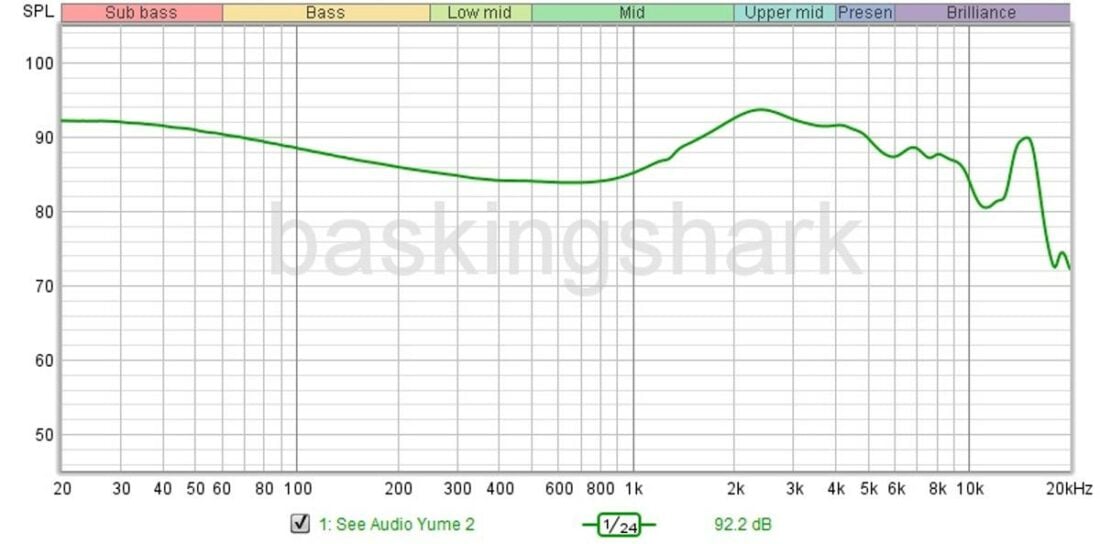
The Yume II sport a balanced U-shaped signature with great extension at both ends.
Their tonality is pretty all-rounded for most music genres, and consumers should find them quite agreeable, other than perhaps die-hard bassheads.
Technicalities are done well. Imaging is very decent, and instruments and vocals can be pin-pointed with ease. Clarity and micro-detailing are strong points of the Yume II, and the soundstage is above average in all three dimensions.
The Yume II hold their own when complex musical tracks come out to play, and the three different drivers seamlessly mix and bring their advertised benefits. Indeed, the Yume II might be a consideration for folks looking for something for audio work or as a stage monitor, in view of their outstanding isolation and fit coupled with admirable technical prowess.
The Yume II are a palette cleanser, in a sea of Harman-tuned IEMs.
Aerophones have an authentic enough vibration at the tail-end, and percussions sound quite authentic with a membranous reverberation. However, brass instruments do lack a metallic overtone when they are blown, and note weight is on the thinner side.
Can you have your cake and eat it? Well, the Yume II fall short when it comes to timbral accuracy, with a slight whiff of BA timbre noted in the higher registers.
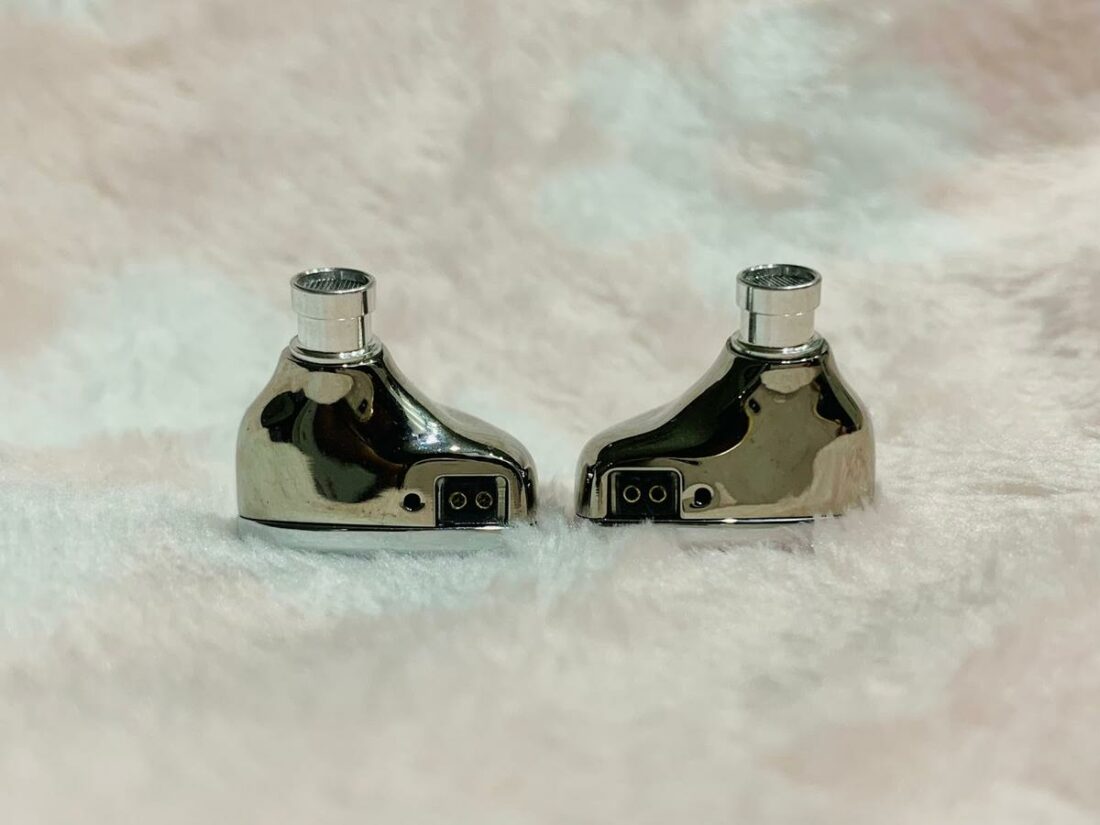
Bass
The Yume II are sub-bass focused, and the bass is just north of neutral. Sub-bass extends deeply, with great rumble, though the Yume II are definitely not a basshead pair. The mid-bass takes a back seat in the tuning, though the bass is well-textured, with fast and clean lines heard, with not an ounce of mid-bass bleed.
The DD bass keeps up with the fast BA drivers handling the upper frequencies.
Coherency, a bug-bear for many rival hybrids, is a piece of cake for the Yume II.
Midrange
The lower midrange is just a tinge recessed. With no mid-bass encroaching on this frequency band, there is a lot of room for the midrange to breathe, showcasing great transparency. Instruments and vocals are easily identified on a palette of a dark background.
The upper mids are forward without veering to shoutiness – this is a really fine knife edge to balance – but the Yume II manage to do it with aplomb.
Vocals are quite addictive. Mid-lovers will have a field day!
Treble
The lower treble continues on from the small upper midrange boost, and the treble extends quite well thereafter, providing a great garnishing to the boosted sub-bass.
For a sparkly and airy signature, the treble is well-dosed and sprinkled in just the right quantity – it surprisingly manages to reign in sibilance and harshness yet boasting great resolution. Cymbals and high hats sound natural, and the resolution is noteworthy, yet the treble remains smooth throughout.
”Cohesive” is the keyword to describe the Yume II.
Comparisons
We will have a cook-off, comparing the Yume II against similarly priced hybrids. Pure BAs, planars, and single DDs are omitted, as the different transducers are like chalk and cheese, and it would be comparing apples to oranges.
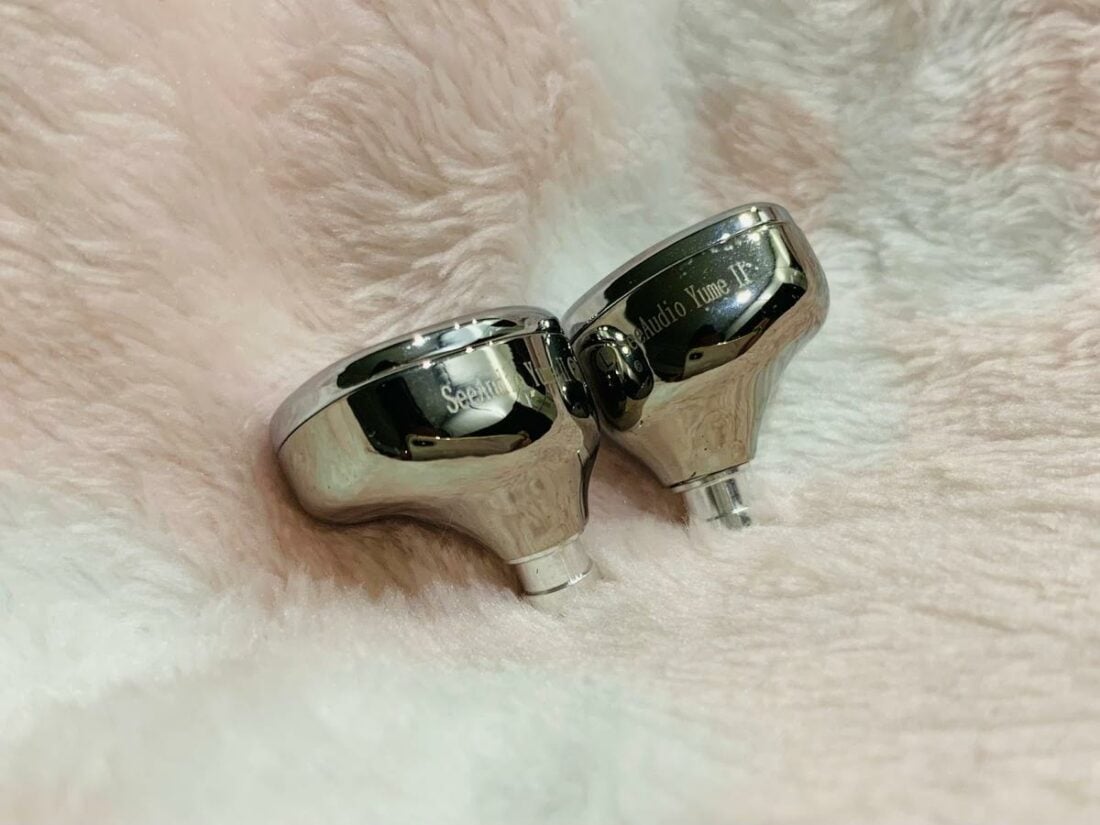
Vs. SeeAudio Yume
The older Yume have poorer extension at both ends, with markedly less bass and upper treble, compared to the upstart Yume II.
Perhaps the older sibling have a more full-bodied midrange, but the Yume II easily usurp them in technicalities – the Yume II have superior soundstage, imaging, micro-details, instrument separation, and layering, and it isn’t a close fight.
There’s no mincing it, the Yume II are all that the original Yume should have been!
Vs. AFUL Performer 5
The Performer 5 are warmer than the Yume II. They have larger bass, though the bass isn’t as tight and textured. The Performer 5 also have less treble, though they have a thicker note weight.
Both sets are no slouch when it comes to technicalities. The Yume II have better soundstage width, and they shade it when it comes to micro-detailing and clarity, though instrument separation and imaging are very close.
It is not cut and dried. These two pairs cook in the same kitchen, albeit the Yume II are arguably a hair ahead when it comes to technicalities.
Vs. MUSE Hifi ME1
The ME1 are a neutral bright set, with thinner note weight. The ME1 have less bass and markedly more upper mids.
The ME1 are very technical and sterile – they have better clarity, soundstage, imaging, and micro-detailing. However, the M1 are shoutier and more fatiguing. Sibilance is present in spades, and the ME1 have a metallic and artificial timbre, with high hats and cymbals being overly emphasized.
The ME1 have with a modular cable that allows them to be used with various single-ended and balanced sources, though they have weaker isolation.
Where to Buy
Conclusion
The Yume II are not the greatest thing since sliced bread, but they do most departments well!
They are a salivatingly great addition to the ultra-competitive mid-Fi hybrid menu. Blending premium ingredients – Knowles and Sonion drivers – into a Michelin-star gourmet dish, the Yume II flaunt excellent technicalities with a balanced and fatigue-free tuning, inundating the taste buds of discerning connoisseurs.
It is not easy to have well-extended treble that eschews sibilance and acerbity, plus deep bass, all the while maintaining acceptable texturing. The Yume II manage all this and more, with frequency bands baked to perfection. Coherency – something that plagues many other multi-driver sets – is easily aced too!
The Yume II are not a one-trick pony like the original Yume.
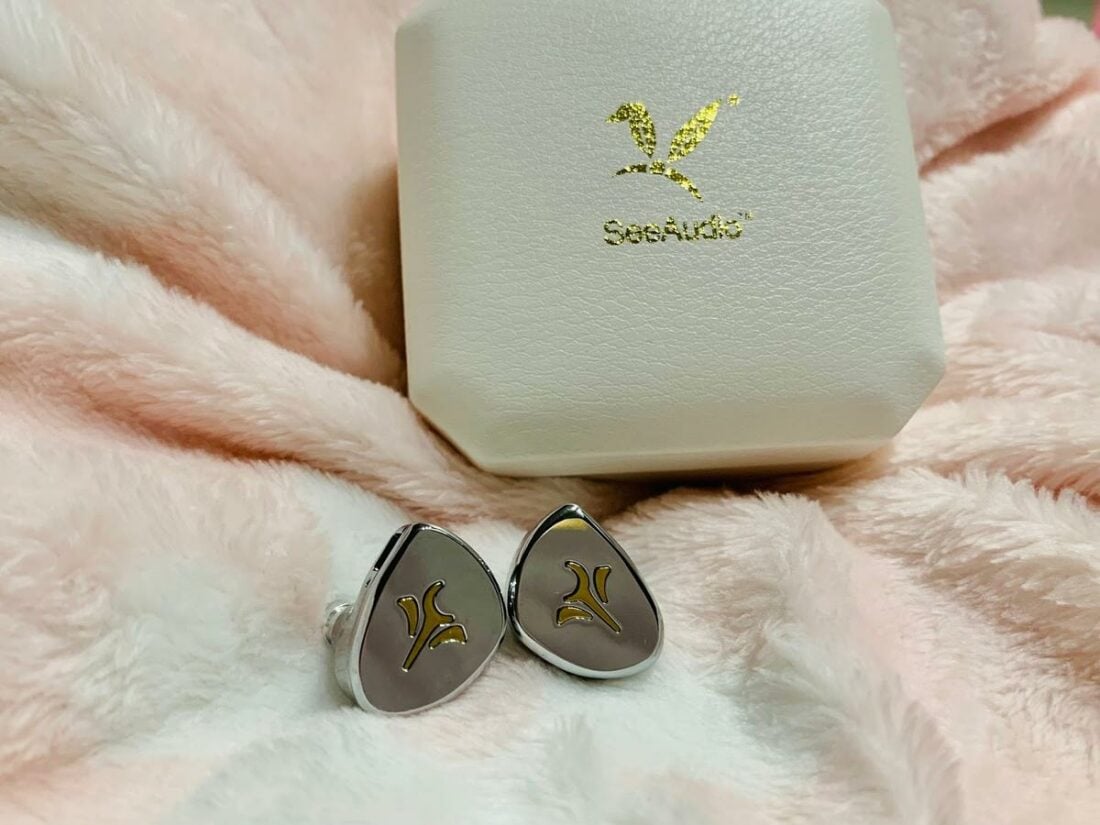
The Yume II are easy to drive, passive isolation is outstanding, and the U-shaped tuning complements most music genres well. Alluring aesthetics with an ergonomic fit are the icing on this beautiful cake.
The Yume II make a fine pair for stage monitoring.
There’s no such thing as a free lunch, though. The Yume II suffer from a thin note weight, and their shells may be easily scratched or smudged. The spread of accessories is satisfactory, other than the disappointing inclusion of only one type of ear tips. A slight BA timbre may be a relevant nitpick too.
Truly, the Yume II are an underrated pair of IEMs. Remarkably, they don’t seem to be selling like hotcakes, so they shall be our little secret – a yummy and delightful dish in the ChiFi buffet spread. They are a joie de vivre to sate one’s appetite – well at least until the next hype-train is served!
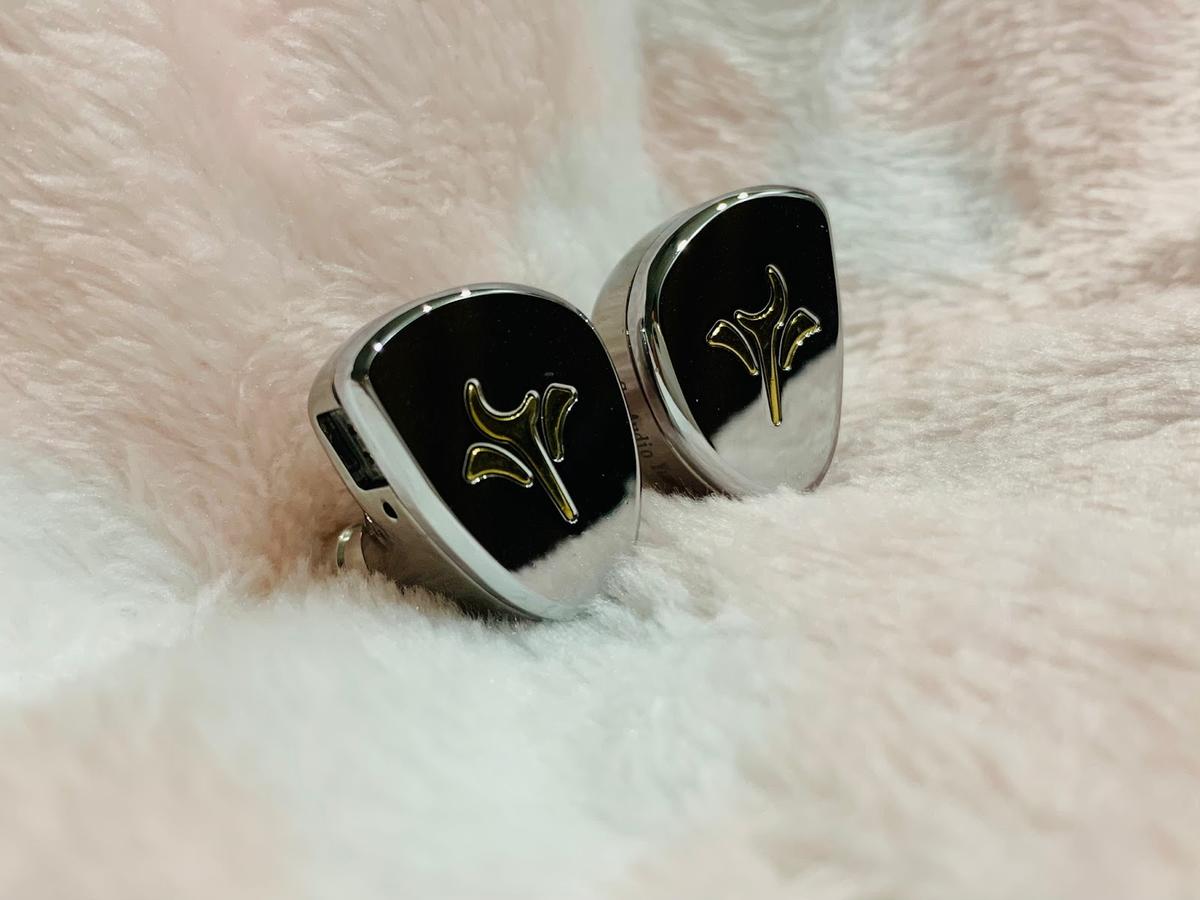
Do you have iem tier list?
I’m new to this audio hobby and want to try good iem. My budget only $50-$70 My play list mostly kpop song, any recommendation?
Hi Sir/Mdm
If you like Kpop, check out the Truthear HEXA. I think during sales it can be just at $70 USD.
It is a neutral IEM with sub-bass boost, technically decent and quite coherent, does most departments well.